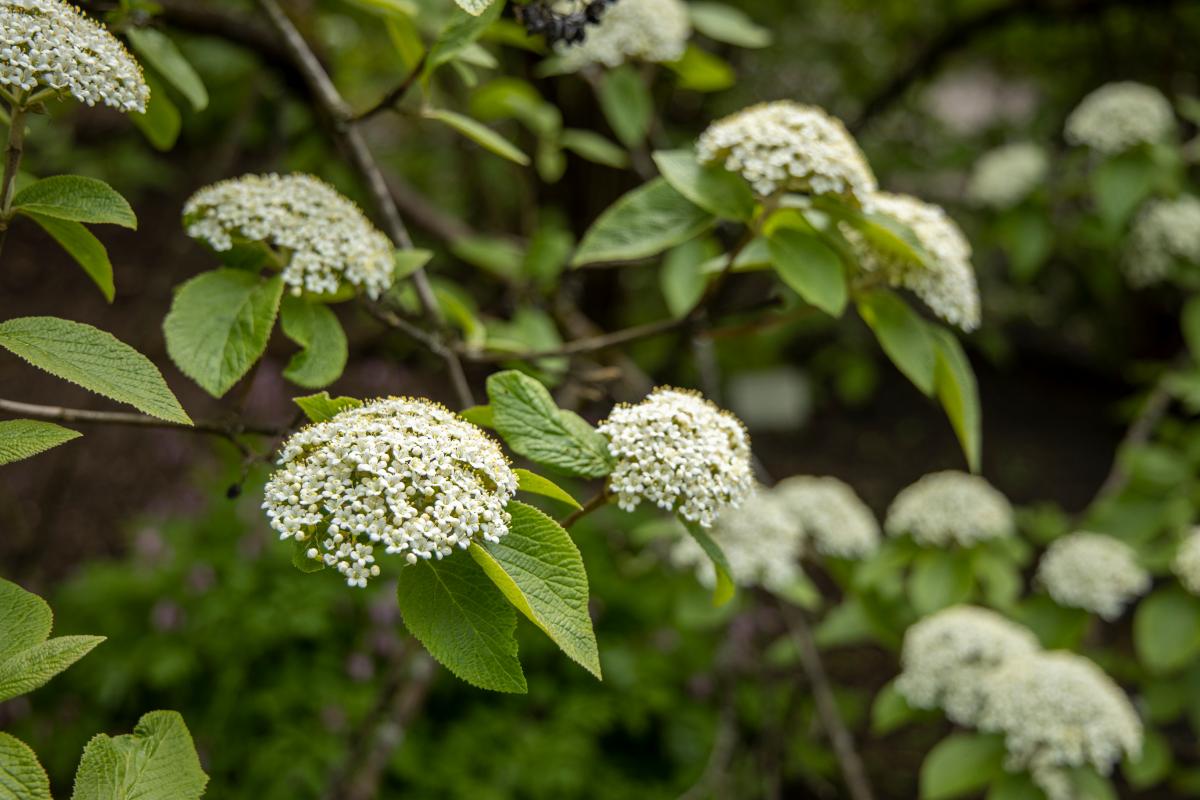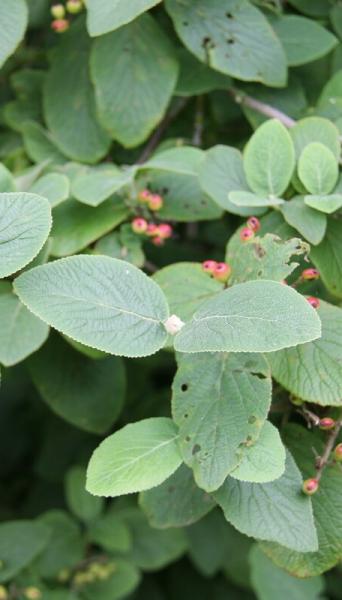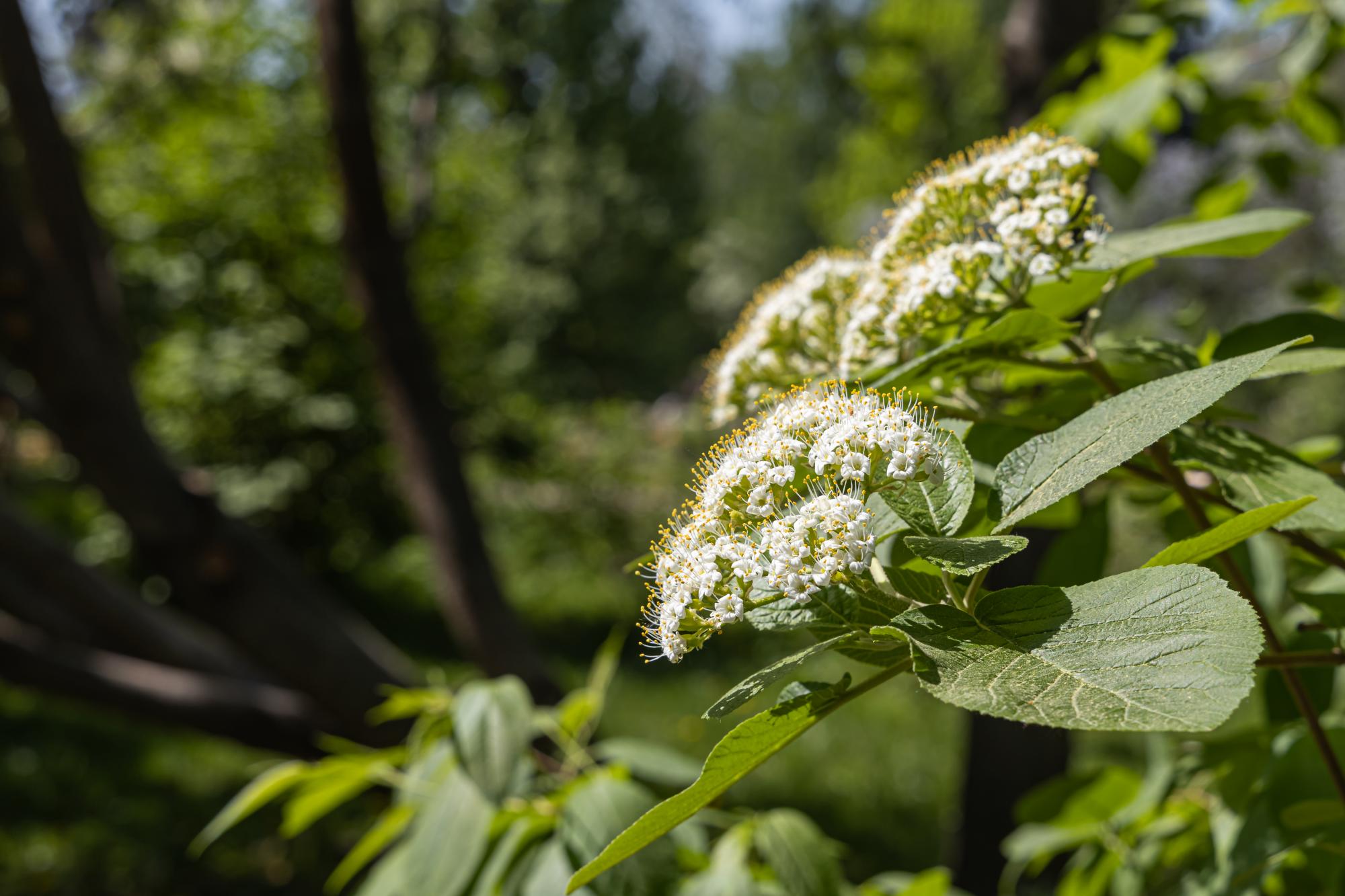
Species Name: Viburnum lantana
The wayfaring tree is a small shrub tree with large flower heads often used as ornamental pieces in gardens. They are naturally found in hedgerows and woodland edges.
The wayfaring tree grows up to 5m and has grey-brown bark that becomes fissured as they mature. The buds are in opposite pairs on a red-brown stem with a white coating. The buds themselves resemble velvety fawn ears in a mustard to grey colour and either lie close to the stem or spread away from it. It has large oval leaves with a round-toothed edge.

The flowers form a dome of small, creamy white, tubular flowers known as an umbel.

The wayfaring tree produces groups of oval, flat, red berries in late summer that turn black as they ripen. The berries are poisonous to humans.

The wayfaring tree is native to southern and central Europe - including the UK. Mainly found in South East England, it prefers chalk soils, and can be found in the Forest in woodland edges, hedgerows and scrub.
The wayfaring tree was named by herbalist John Gerard, who noticed them along paths between Wiltshire and London in the late 1500's. They became associated with being on or near a path, preventing travellers from getting lost.
The wayfaring tree has strong flexible stems that were traditionally used to tie hay bales and make arrows.
The umbel flowers attract many insects in May and June, providing an important source of pollen and nectar. In the autumn, the red and black berries are a food source for birds and small mammals.
The wayfaring tree branches are also known as ‘twistwood’ as they used to be twisted into whip handles.
2% of the trees we are planting in the Forest this season are wayfaring trees.




